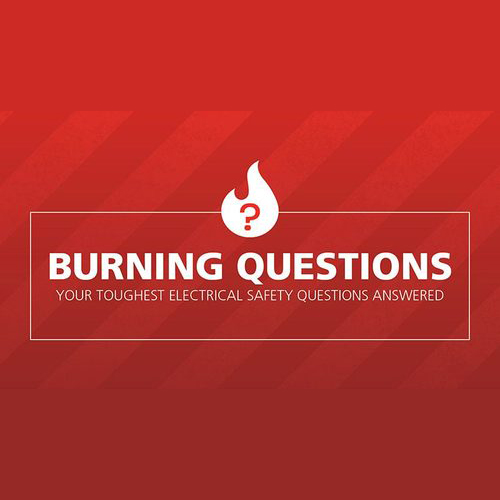


Posted October 10, 2018
Regarding Arc Flash Hazard footwear — leather boots are recognized as adequate protection for hazards >12cal.
What about insulated heavy rubber (“Mickey Mouse”) work boots?
Rubber insulating boots (DI) boots meeting ASTM F2413 (DI) are tested for boot characteristics and for DI characteristics.
This is done by using ASTM F1116 Standard Test Method for Determining Dielectric Strength of Dielectric Footwear as specified in ASTM F1117 Standard Specification for Dielectric Footwear.
There is no arc testing required by this standard or by ASTM F2413. But the three main manufacturers have tested according to ASTM F2621. The boot is exposed 12 inches from the arc to 40 cal/cm² and evaluated for ignition, melting and dripping. The three boot brands tested have passed this criteria.
Paper tissues are also placed in the boot just to evaluate for scorching, and none has been observed. My bet is the boots would ignite at the edge at some point. But I would never worry about a boot ignition since the feet will typically never see that much energy in a T&D setting that can be envisioned.
NFPA 70E® in Appendix table H.2 [citing 130.7 (C)(8)] lists “Dielectric overshoes as needed” in the Two-Category approach with Arc Flash Suits. This would indicate that the committee feels there is no current need to arc rate shoes. Additionally, in 130.7 (C)(10)(e) the standard goes further:
Foot Protection. Heavy-duty leather footwear or dielectric footwear or both provide some arc flash protection to the feet and shall be used in all exposures greater than 4 cal/cm².
OSHA states in the preamble to 1910.269 (2014 version) that, “The final rule removes the requirement for employees to wear protective footwear as protection against electric shock.
…OSHA is revising its general industry standard on foot protection, 29 CFR 1910.136, to require employers to ensure that each affected employee uses protective footwear when… the use of protective footwear will protect the affected employee from an electrical hazard, such as a static-discharge or electric-shock hazard, that remains after the employer takes other necessary protective measures.
Also in the preamble:
Secondary insulation normally insulates an employee’s feet from a grounded surface. Electrical hazard footwear and rubber insulating matting are examples of secondary electrical protection.
Because ASTM does not consider DI or EH shoes as primary protection, OSHA eliminated its language which implied that. One must still use DI or EH footwear as secondary protection, but because they are never re-tested like gloves or blankets, they cannot be considered primary protection.
There have been incidents of rubber insulating shoes failing. The data gives strong precedent that this kind of incident occurring would be quite difficult.